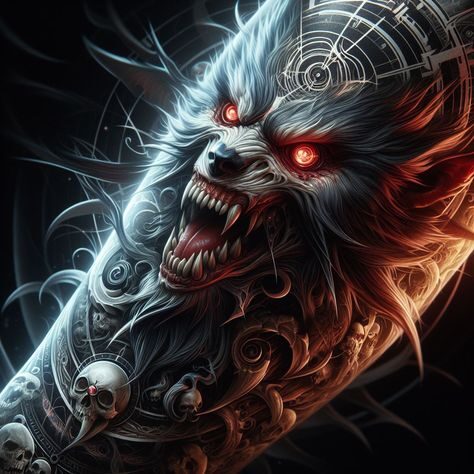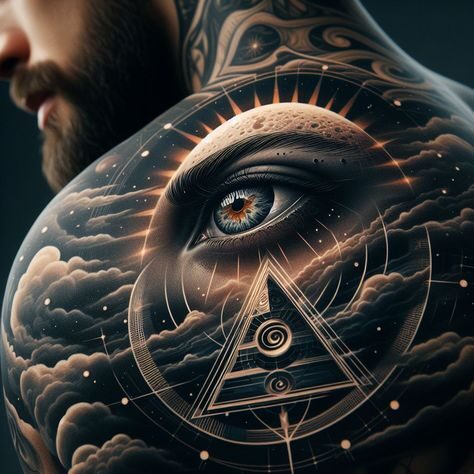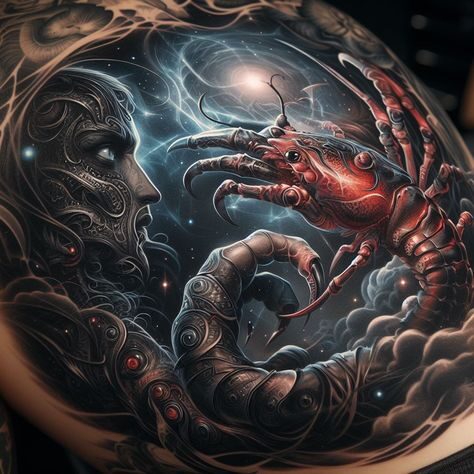
The art of tattooing has evolved dramatically over the years, moving from simple, traditional designs to intricate, lifelike representations that push the boundaries of creativity and technique. One of the most mesmerizing trends in contemporary tattooing is the rise of 3D tattoos. These tattoos create the illusion of depth and realism, transforming skin into a canvas for breathtaking, multidimensional artwork. This article delves into the world of 3D tattoos, exploring their history, techniques, popular designs, and tips for choosing the perfect 3D tattoo.
The Evolution of 3D Tattoos
Tattooing has a rich history that spans various cultures and centuries. However, the concept of 3D tattoos is relatively new, gaining prominence in the late 20th and early 21st centuries. The development of advanced tattooing techniques and equipment has enabled artists to experiment with shading, perspective, and color in unprecedented ways.

The introduction of realistic portrait tattoos in the 1980s and 1990s paved the way for 3D tattoos. Artists began using fine lines and shading to create lifelike images, and this technique soon evolved into creating the illusion of three-dimensional objects on the skin. Today, 3D tattoos are a testament to the skill and innovation of modern tattoo artists.
Techniques Behind 3D Tattoos
Creating a 3D tattoo requires a deep understanding of light, shadow, and perspective. Here are some key techniques used by artists to achieve the 3D effect:

1. Shading
Shading is crucial for creating the illusion of depth. Artists use gradients of light and dark to mimic how light falls on an object, making it appear three-dimensional. The smoother the shading transition, the more realistic the tattoo will look.
2. Highlighting
Highlighting involves adding bright spots to mimic reflections of light on the surface of the tattoo. This technique enhances the realism by creating the illusion that the tattooed object is reflecting light just like a real object would.
3. Color and Contrast
The use of color and contrast is vital in 3D tattoos. Bold, contrasting colors can make elements of the tattoo pop, while subtle color transitions can add to the realism. Artists often use a mix of vibrant and muted colors to achieve a lifelike appearance.

4. Perspective and Proportion
Getting the perspective and proportion right is essential for a convincing 3D tattoo. Artists must have a keen eye for detail to ensure that the tattoo’s elements are aligned and sized correctly, maintaining the illusion of depth.
5. Layering
Layering different elements in a tattoo can enhance the 3D effect. By placing some parts of the design in the foreground and others in the background, artists create a sense of depth and dimension.
Popular 3D Tattoo Designs

The versatility of 3D tattoos means they can cover a wide range of designs. Here are some of the most popular types:
1. Optical Illusions
Optical illusion tattoos are designed to trick the eye, making the skin appear to have holes, cracks, or other surreal effects. These tattoos are often highly detailed and require exceptional skill to execute.
2. Realistic Animals and Portraits
Realistic animal and portrait tattoos are common in 3D designs. Artists recreate lifelike images of pets, wildlife, or loved ones with astonishing detail and depth, making them appear almost photographic.
3. Mechanical and Bio-Mechanical Designs
These tattoos combine elements of machinery with human anatomy, creating a cyborg-like appearance. Gears, pistons, and other mechanical parts are intricately detailed to blend seamlessly with the body’s natural contours.
4. Nature Scenes
Nature-themed 3D tattoos can include lifelike representations of flowers, trees, or landscapes. These designs often utilize vibrant colors and intricate shading to bring the natural world to life on the skin.
5. Abstract and Surreal Art
Abstract and surreal 3D tattoos push the boundaries of creativity. These designs often feature mind-bending visuals and imaginative concepts that challenge conventional perceptions of reality.
Choosing the Perfect 3D Tattoo
Selecting the right 3D tattoo involves careful consideration of various factors. Here are some tips to help you make the best choice:
1. Research Artists
Not all tattoo artists specialize in 3D tattoos. Look for artists with a strong portfolio of 3D work. Check online reviews and seek recommendations to find a reputable artist who can deliver the quality you desire.
2. Consider Placement
The placement of your tattoo can significantly impact its overall effect. Choose an area of your body that allows enough space for the detail and complexity of a 3D design. Common placements include the arm, back, chest, and thigh.
3. Design Choice
Select a design that resonates with you personally. Whether it’s a portrait, a mechanical design, or an abstract piece, ensure it reflects your personality and style. Discuss your ideas with your artist to create a custom design that fits your vision.
4. Pain Tolerance
3D tattoos often require longer sessions and more detail work, which can be more painful than simpler designs. Be prepared for the commitment and discuss pain management options with your artist if needed.
5. Budget
3D tattoos are typically more expensive due to the time and skill required. Ensure you have a clear understanding of the costs involved and budget accordingly. Remember that quality should never be compromised for the sake of saving money.
Caring for Your 3D Tattoo
Proper aftercare is essential to ensure your 3D tattoo heals well and retains its vibrancy. Follow these steps to care for your new tattoo:
1. Follow Artist’s Instructions
Your tattoo artist will provide specific aftercare instructions. Follow these guidelines closely to avoid complications and ensure optimal healing.
2. Keep It Clean
Gently wash your tattoo with mild, fragrance-free soap and lukewarm water. Pat it dry with a clean towel to avoid irritation.
3. Moisturize
Apply a thin layer of tattoo-specific moisturizer to keep the skin hydrated and prevent scabbing. Avoid using products with fragrances or alcohol.
4. Avoid Sun Exposure
Keep your tattoo out of direct sunlight during the healing process to prevent fading and damage. Once healed, use sunscreen to protect the tattoo from UV rays.
5. Avoid Soaking
Refrain from swimming or soaking in baths until your tattoo is fully healed. Excess moisture can cause infections and affect the healing process.
Conclusion
3D tattoos represent a remarkable fusion of art and technique, creating illusions of depth and realism that captivate the eye and spark the imagination. Whether you’re drawn to optical illusions, lifelike portraits, or surreal designs, a 3D tattoo can be a stunning and meaningful addition to your body art collection.
By understanding the history, techniques, and popular designs of 3D tattoos, you can make an informed decision that aligns with your personal style and preferences. Take the time to research artists, consider placement and design, and follow proper aftercare to ensure your 3D tattoo remains a vibrant and enduring masterpiece.
Embrace the new dimension in body art, and let your skin become the canvas for a breathtaking 3D tattoo that will leave a lasting impression.





